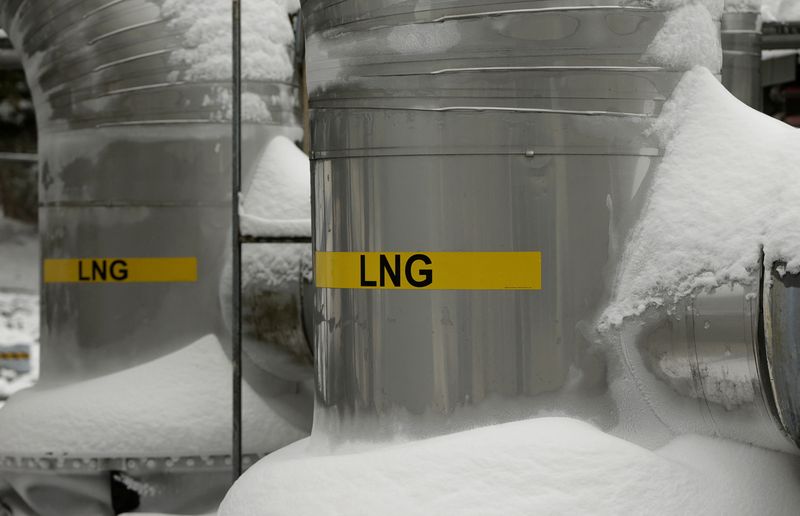(Reuters) -U.S. natural gas production and demand will rise to record highs in 2022, the U.S. Energy Information Administration (EIA) said in its Short-Term Energy Outlook (STEO) on Tuesday.
EIA projected dry gas production will rise to 98.07 billion cubic feet per day (bcfd) in 2022 and 99.69 bcfd in 2023 from a record 94.57 bcfd in 2021.
The agency also projected gas consumption would rise from 84.01 bcfd in 2021 to 88.39 bcfd in 2022 before sliding to 85.08 bcfd in 2023. That compares with a record 85.29 bcfd in 2019.
EIA's latest projections for 2022 were higher than its October forecasts of 97.56 bcfd for supply and 87.89 bcfd for demand.
The agency forecast average U.S. liquefied natural gas (LNG) exports would reach 10.85 bcfd in 2022 and 12.33 bcfd in 2023, up from a record 9.76 bcfd in 2021.
That was lower than the 11.01 bcfd EIA forecast in October due primarily to the ongoing outage at the Freeport LNG export plant in Texas.
EIA projected U.S. coal production would rise from 578.1 million short tons in 2021 to 595.3 million short tons in 2022 as power utilities boost inventories before sliding to 573.2 million short tons in 2023 as renewable sources of power displace coal-fired plants.
In 2020, coal output fell to 535 million short tons, its lowest level since 1965.
As the economy grows and consumers burn more oil and gas, EIA projected carbon dioxide emissions from fossil fuels would rise to 4.975 billion tonnes in 2022 from 4.904 billion tonnes in 2021, before falling to 4.842 billion tonnes in 2023.
That compares with 4.577 billion tonnes in 2020, which was the lowest since 1983 because the coronavirus pandemic depressed demand for energy.
